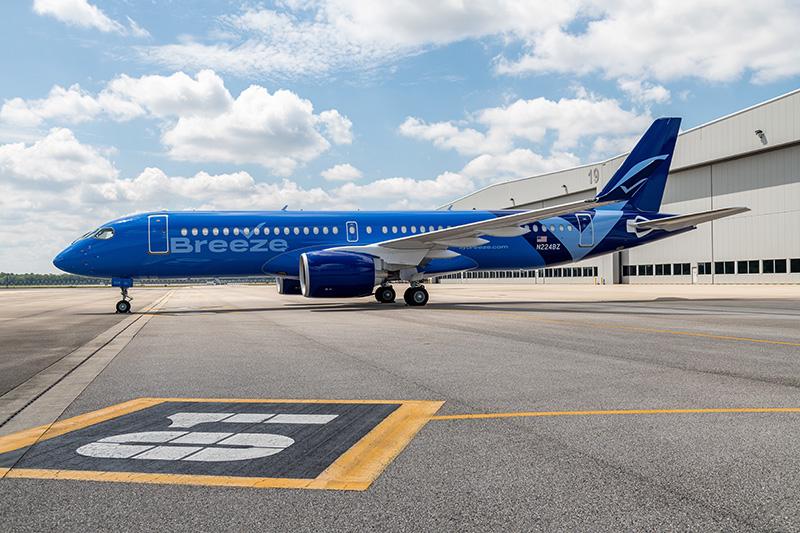
Breeze Airways is working on approvals for scheduled international flights as it continues its fleet transition from Embraer E-Jets to Airbus A220s.
“We’ve got our international charter certification and the team is now working on international scheduled approvals with the FAA,” Breeze CCO Lukas Johnson said.
Although the greater range of the A220-300 over the E190/195s gives Breeze the capability of venturing further into areas such as the Caribbean, this may not be on the cards for a while yet.
“Our longest route is Providence, Rhode Island, to LAX. That’s 2,600 statute miles. Go any further and you have to get ETOPS to fly over water.”
Breeze began services during the pandemic in 2021 when leased aircraft could be acquired at favorable rates. Sourcing a fleet of pre-owned Embraers enabled Breeze “to get our name out there,” Johnson said.
At present, Breeze retains 10 E190s and five E195s, plus 23 A220-300s, but this figure is changing “by the month” as more new Airbuses are received. By year-end, Breeze aims to have 32 A220s. The airline will retain around 10 E190s “through at least the end of the year” but these will increasingly be used for charters.
Passengers have taken well to the changeover of types, Johnson said. “I would say guests love both. The Embraers have a 2+2 configuration, so no middle seat. But with the A220, guests get on and are blown away, even though it’s a 2+3 configuration.” (Breeze operates a 2+2 ‘Ascent’ class at the front of the aircraft, “Our version of domestic first class.”)
Cabin width and airiness, together with wi-fi streaming capability and power sockets at each seat are particularly popular with passengers, who are often accustomed on travelling on earlier-generation 50 to 75-seat regional jets out of smaller cities, he said.
Breeze’s operating philosophy is to improve connectivity at secondary or tertiary-level airports that have previously been underserved, such as Akron OH, Madison WI or Manchester NH, either because of their proximity to a major hub, or their relative remoteness, which has made them unattractive to other carriers. The airline’s arrival has led to major growth in passenger traffic at some airports.
Breeze has had some success in navigating the engine problems that have affected the A220’s Pratt & Whitney powerplants, Johnson added. “It’s certainly a concern for us [but] we’ve managed to not be as impacted as some other carriers.”
Partly, this has been due to Breeze’s aircraft being later models, which have the latest engine modifications, partly because of the activities of the airline’s technical operations teams in mitigating some of the issues.





